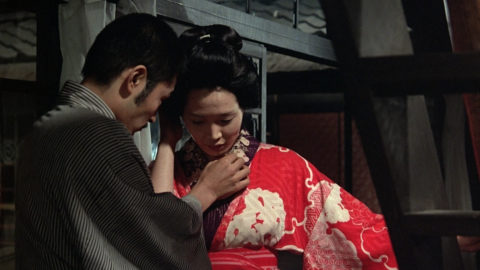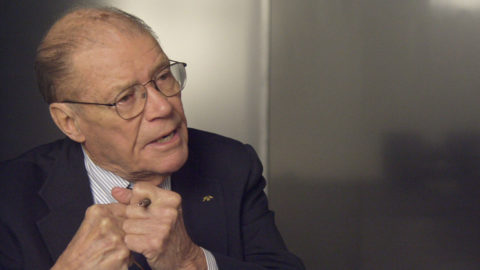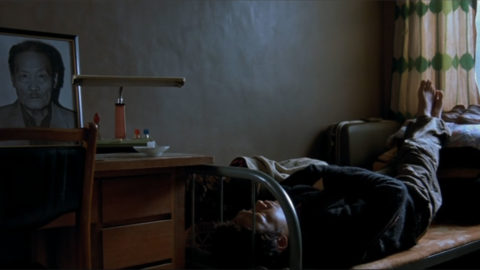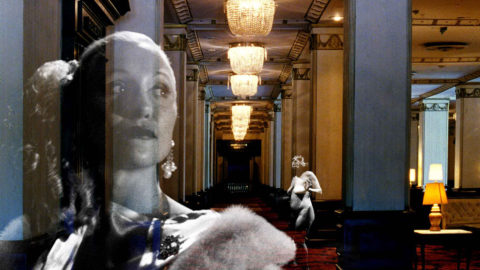
Less is More
The New York Film Festival is a small, curated “boutique” of world cinema, with only 25 feature slots, purporting to be the cream of the crop. When it works, as it did this year, the chosen films seem to be having a rarefied conversation with one another, almost like a graduate seminar. Other years may have yielded more masterpieces, but rarely has the quality been so consistently high, and one came away with a clearer notion of the state of the art. For instance, the extended take seemed ubiquitous as a privileged technique, but its range of flexibility proved exceptional, from Alexander Sokurov’s ecstatic whirling through the Hermitage Museum in Russian Ark to the Dardenne Brothers’ sweaty pursuit of a workaholic carpentry teacher and his assistant in their magnificent The Son, to Abbas Kiarostami’s claustrophobically immobile car dialogues in his superlative, structuralist-inflected Ten, to the lateral, hypnotically swaying camera in Tian Zhuangzhuang’s haunting Springtime in a Small Town.
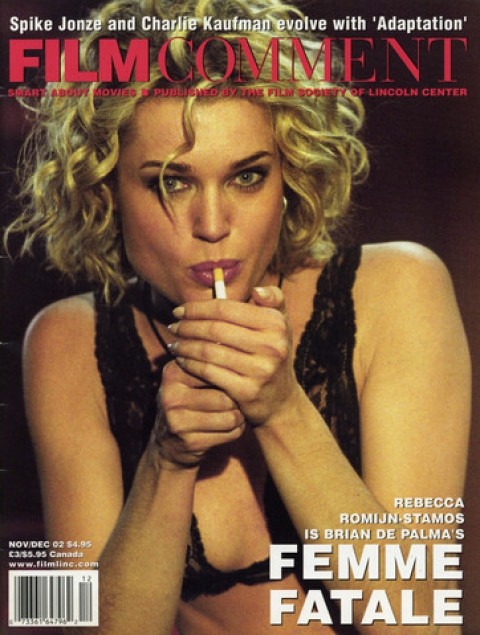
About this last title, it came as no surprise that the director of Horse Thief and The Blue Kite made such a strong film, but the novelty was its delicacy and exquisite aestheticism. Tian took as a point of departure Fei Mu’s Forties melodrama about a sickly aristocrat, his restless wife, and his best friend (who had once been the woman’s lover, before her marriage). To this sticky, heavy-breathing plot, Tian brought a detachment that takes in the architecture of a decaying villa with leprous walls, and tracks the characters from room to room as they flail to escape or surrender to their passions. Set in 1946, it features a gaslit alternation of sumptuous colors and impenetrable shadows that recalls the moody atmosphere of Hou Hsiao-Hsien’s Flowers of Shanghai (both the work of an amazing cinematographer, Mark Lee Ping-bing). The distanced camera allows for psychological undercurrents of attraction, guilt, or self-revulsion to gather steam; the slightest gestures, such as the woman placing her head on her ex-lover’s shoulder, explode with unexpected force. Most remarkable is the long birthday scene when the wife gets herself and her ex-lover drunk, and her husband, in the background (never in close-up), finally understands what is going on. A wild expressionism of emotion butts up against a supremely calm, bolero-like mise-en-scène. In sum, Springtime is less a remake than a modernistic meditation on this melodrama, a severe imposition of strict tempo on romantically febrile material.
In that sense, it bears a family resemblance to another superb movie shown here, The Uncertainty Principle, wherein Oliveira stylizes the melodramatic shenanigans of Iberian novels with a density and gravity that is faintly absurd, almost in the manner of late Buñuel. The difference is that, while both directors employ a rigorously removed long-shot aesthetic that refuses to indulge any sentimentality or excuses for bad behavior, Tian’s balanced sympathy for his three errant protagonists transcends archness and moves us to pity.
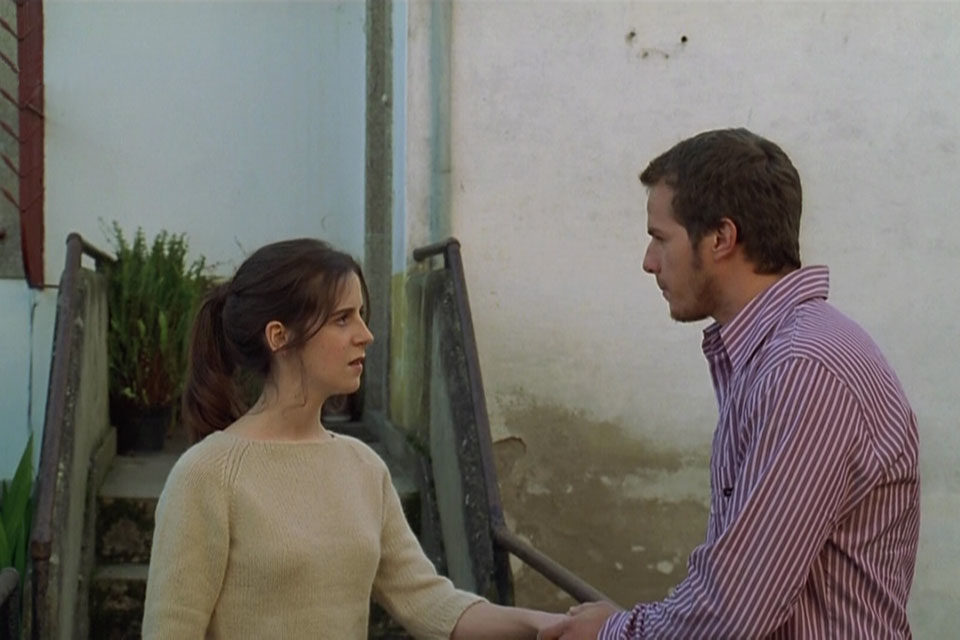
The Uncertainty Principle
Another subtle, extended-take film from Asia is Turning Gate, by the South Korean director Hong Sang-soo. It follows a handsome, somewhat spoiled but likable out-of-work actor as he is pursued by, and pursues, two women. The film is set up in chapters and well-composed tableaux, during which a sly comic feeling starts bubbling up in the embarrassing zone between sex and love. The three sex scenes are especially amazing, deftly revealing character through bedroom intimacies. The protagonist is clearly an unfinished man, an actor waiting to be filled by other people’s lines, accommodating and yet eager not to be trapped. Banging up against his self-limitations, he begins to change, moving from ambivalence to desire; but is the world ready for him? (Having it both ways, the film cleverly offers a fortune-teller’s preview of the hero’s fate near the end, even as it leaves him in narrative limbo, standing in the rain.) The freshness of this movie is that you never know where it’s going from scene to scene. Along with his previous film, the engaging Virgin Stripped Bare by Her Bachelors, Hong Sang-soo is carving out a surprising cinema of understatement and psychological richness, based on the colliding needs of contemporary men and women.
Character complexity is at the heart of Kiarostami’s Ten, my favorite film at the festival. In ten dialogue scenes, a beautiful woman bent on self-actualization drives her son, sister, and various hitchhikers through the clogged streets of Tehran. The austere visuals leave us no exit from the situational tensions affecting the characters: I was most impressed with the sudden yet utterly convincing shifts between the driver’s self-knowledge, rationalizations, blind spots, and eruptive irritations. One moment she’s patience itself with her young son as he lashes out at her; the next, unconsciously seductive and provoking toward him. The social neurosis of patriarchal Iran is folded seamlessly into this woman’s psyche, as she grapples with her conflicting drives, and eventually comes to a more stoic understanding about how little is under her control.
That same helical entwining of individual and social pathologies forms the basis of Love and Diane, an absorbing three-hour documentary by Jennifer Dworkin. Two generations of black women in a Brooklyn ghetto struggle to raise their children and keep their pride, in the face of economic hardship, drug problems, HIV infection, a history of parental abandonment, emotional depression, and the schizoid bureaucratic requirements of social welfare programs. One can certainly sympathize with Love, the teenage ex-hooker mom, and her angry resistance to playing by the Man’s rules, even as one cringes at her self-destructive lapses and alibis. What is so honorably dramatized here is the slowness of the process of forgiveness, not to mention the acquisition of realistic self-insight and responsibility for one’s actions. The filmmaking is undistinguished and a bit rough, the documentary’s point of view sometimes murky, but enough comes through to give us a privileged view of the hard lives of these self-divided women.

To Be and To Have
In To Be and To Have, we are treated to almost the opposite spectacle: an encounter with a whole human being, whose melancholy serenity has a healing effect on the world around him. The veteran documentarist Nicolas Philibert brings an elegantly patient, restrained style to his portrait of a teacher, Georges Lopez, and his pupils, in a one-room schoolhouse in rural France during the course of a year. Everything about Lopez, his quiet voice, the way he cocks his ear when listening to his charges or mediates their fights, his openness to their childhood sorrows, alongside his refusal to let them stray from the task of learning, is impressively of a piece. Anyone who has had, or worked with, children will be fascinated by the impromptu choices of response this teacher makes (and, concurrently, the tactful decisions the filmmaker makes to stay with a scene or cut away). Educational reformers may be dismayed to see that Lopez is an utter traditionalist when it comes to curriculum. What is radical is his “I-thou” manner, allowing him to approach each child as a thoughtful, reasoning human being.
In The Magdalene Sisters, a lacerating indictment of an Irish-Catholic laundry/penal colony for wayward girls, you are never in moral doubt about the point being made: Innocence versus Evil. Peter Mullan’s direction of the actors succeeds in making you care deeply about these victimized women unjustly denied their freedom; he has elicited a remarkable quartet of performances (Anne-Marie Duff, Dorothy Duffy, Nora-Jane Noone, Eileen Walsh) from his four lead inmates, whose attractiveness seems achingly enhanced by their suffering and strength of character. Still, I couldn’t help resenting a coercive narrative setup that let only the inmates be revealed as human beings, while the nuns remained shadowy gargoyles.
The Catholic Church fared little better in Marco Bellocchio’s My Mother’s Smile, an intriguing if far-fetched narrative about an atheist artist whose late mother is put forward for sainthood. It was good to see Bellocchio again in full cinematic throttle, keeping the tensions boiling between religion, conscience, family ties, and sexual desire. Is our stressed hero (played by the soulful, doleful Sergio Castellitto) going paranoid, or is everyone really conspiring against him? Finally, this minestrone of mad siblings, angelic seductresses, and sinister priests whose tentacular control recalls The Seventh Victim, is too baroque for its own good. It’s hard to accept the initial premise that the Church would ever be foolish enough to beatify an ordinary housewife whose only claim to sanctity is that one of her sons killed her. But maybe I’m being too right-brain linear, and the film is meant to work on some disturbingly surreal, unconscious register.
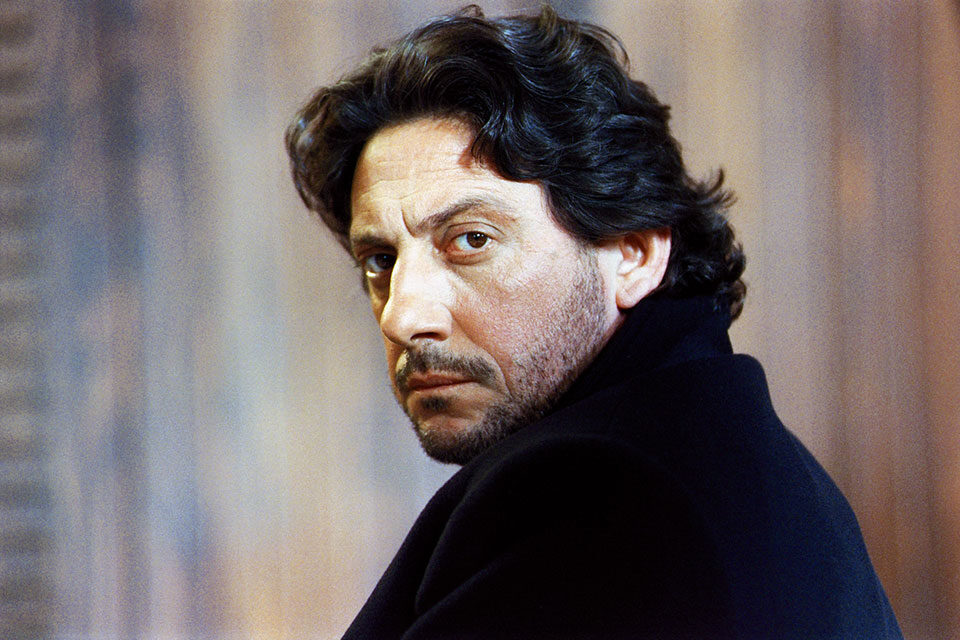
My Mother’s Smile
You would need a similar rationale to justify the weakest entry in the festival, Claire Denis’s Friday Night. A woman about to move in with her boyfriend finds herself caught in traffic; so she picks up an attractive man, they end up going to a hotel, having sex, then dinner, and she leaves the next morning with a big smile on her face. I suppose we are meant to applaud that the woman is not punished for her sexual boldness or her lack of fidelity; otherwise, the film seems as pointless and lacking in tension as any wish-fulfillment fantasy that meets no resistance. There is much to-do about inner dream states and surface textures, conveyed in myopic, fragmented close-ups, but the refusal to develop the lockjawed characters as individuals who might learn more about each other throughout the night blunts the effect of these subjectivities. In the end, all we have are two abstractions for man and woman who have found tender protection in each other’s arms. Bully for them.
Three of the features—Otar Iosseliani’s Monday Morning, Abderrahmane Sissako’s Waiting for Happiness, and Elia Suleiman’s Divine Intervention—avoided a central plot (or central conflict, for that matter), choosing instead to move from person to person in a Tati-like accumulation of vignettes, comic bits, observations, and images. The Georgian-French Iosseliani has become the master of this difficult-to-sustain ensemble construction, and his film was a model of consistent invention, balancing the comic and the despairing, aided in no small measure by William Lubtchansky’s luminous long-shot photography. In Waiting for Happiness, the African director Sissako pulled off a deeply touching masterwork of ensemble eavesdropping. It’s a small film, but you’d almost have to go back to Ray’s Apu trilogy to find the same strands of sympathy connecting a filmmaker to a group of villagers in the tasks of daily life. Sissako’s gift for imagery is so stunning that ordinary events take on a visionary quality, like the shot of the boy toting an electric light through the sand, or the freighters bobbing in the harbor. I loved this film. I can’t quite say the same for Palestinian filmmaker Suleiman’s intermittently entertaining pastiche of revenge fantasies against the Israeli occupation, which seemed more hectoring than his previous, miraculously sly Chronicle of a Disappearance, but the aesthetic imbalances wrought by mounting political anger are certainly understandable. Politics shadowed the festival in other ways. The great Kiarostami was stupidly denied a visa by the U.S. State Department, while his fellow filmmakers Aki Kaurismäki and Sissako showed solidarity by canceling their appearances as well.
Of course, some journalists on the festival circuit grumbled as always that the 25 offerings were “nothing new,” they’d already been screened at Cannes or Berlin or Toronto, and the atmosphere was not “festive” enough, not enough parties or glamorous stars. This year the festival also came under attack for failing to include the sort of crowd-pleasing Hollywood picture it had in the past, such as The Big Chill; Michael Moore challenged the manhood of the selectors because his Bowling for Columbine was passed over; Brian De Palma criticized the festival committee as a bunch of elitist snobs for omitting him year after year, and dismissed the NYFF as increasingly “irrelevant” to the industry and general public. No matter: the screenings took place, 98 percent of the tickets were sold, the local press (including The New York Times) wrote an unprecedented string of respectful, enthusiastic notices, and for two weeks the cognoscenti (I include myself) were more or less in bliss, or at least very appreciative of the chance to see these challenging, commercially iffy films, a quarter of which still lack American distributors.



